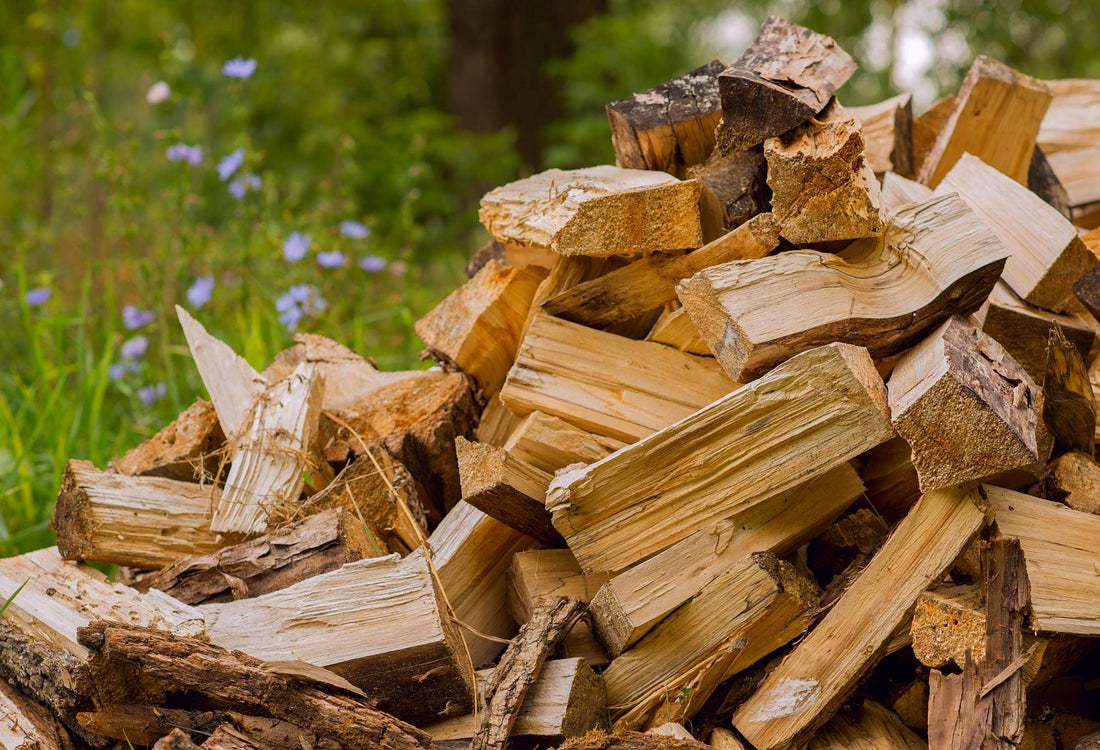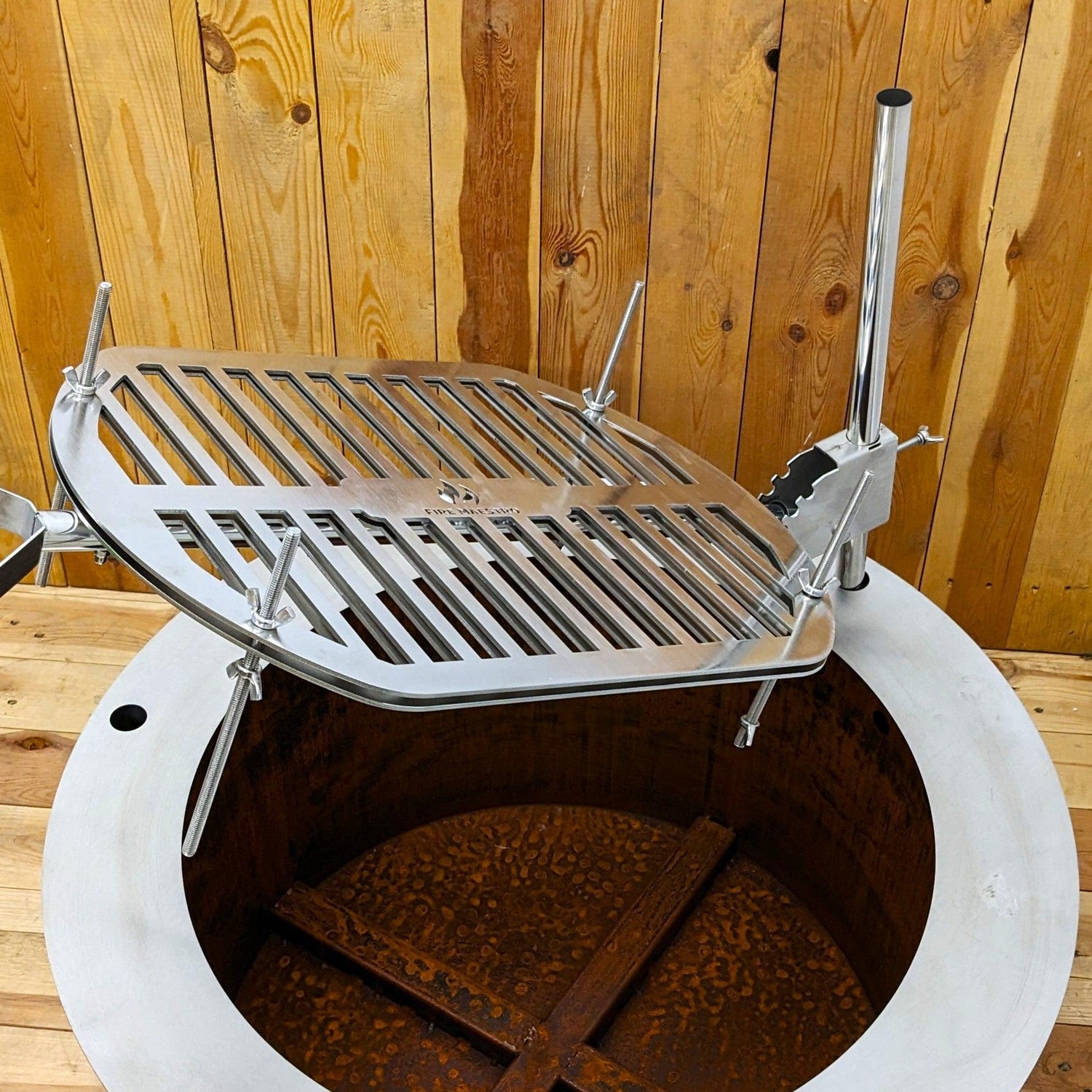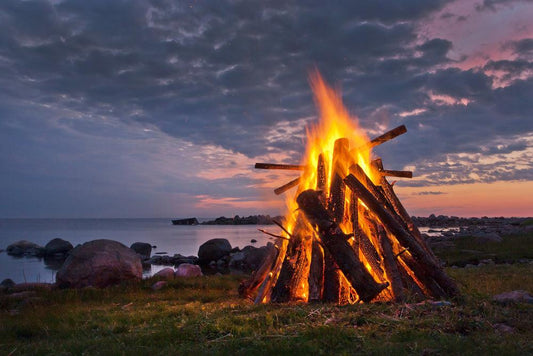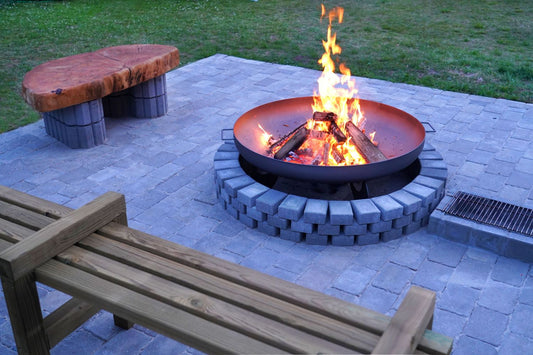
Storing Firewood in the UK: A Comprehensive Guide
Share
There's nothing quite like the warmth and comfort of a wood-burning stove or fireplace on a cold winter's day. However, to ensure your firewood is dry and ready to burn efficiently, proper storage is key. In this article, we'll cover everything you need to know about storing firewood in the UK, including where to store it, how to stack it correctly to dry, drying wood, where to find dry wood in the UK, and a summary of Ready To Burn wood.
Where to Store Firewood
When it comes to storing firewood, location is everything. Ideally, firewood should be stored in a dry, well-ventilated area, protected from rain, snow, and other elements that can cause it to become damp. If possible, a purpose-built shed or storage area is the best option. This will protect the wood from moisture and ensure it stays dry and ready to burn.
If a purpose-built shed is not an option, the next best thing is to store your firewood under a cover, such as a tarpaulin or plastic sheeting. This will protect it from rain and snow, but be sure to leave the sides open to allow for proper ventilation. Avoid storing firewood directly on the ground, as this can cause it to absorb moisture and become damp. Elevate your wood off the ground by using a pallet or something similar; or even sacrificing a few pieces and stacking them perpendicular for your wood to sit on will help air circulate around the wood.
How to Stack Firewood Correctly
Once you have a suitable storage area, the next step is to stack your firewood correctly. Stacking firewood allows air to circulate around the wood, helping it to dry out more quickly. When stacking firewood, it's important to:
Stack the wood off the ground:
Use pallets or a raised platform to keep the wood off the ground and allow for proper air circulation.
Stack the wood loosely:
Stack the wood loosely to allow for air to circulate. Avoid tightly packing the wood tight together, as this can cause it to dry unevenly and become damp.
Stack the wood with the bark facing up:
This will help to protect the wood from rain and snow and allow it to dry more quickly.
Cover the top of the stack:
Cover the top of the stack with a tarpaulin or plastic sheeting to protect it from rain and snow, but leave the sides open for ventilation.
Drying Firewood
Drying firewood can take anywhere from six months to two years, depending on the type of wood, the size of the logs, and the humidity and temperature of the storage area. To ensure your firewood is dry and ready to burn, it should have a moisture content of less than 20%.
To check the moisture content of your firewood, you can use a moisture metre. These can be purchased online or at your local hardware store. If you have a lot of time, and don't have a moisture metre, you can check the moisture content of your firewood by weighing a piece of wood and then drying it in an oven at 100°C for 24 hours. After 24 hours, weigh the wood again. The weight loss will give you an indication of the moisture content.
Where to Find Dry Firewood in the UK
If you're unable to store and dry your own firewood, there are a number of options for purchasing dry firewood in the UK. Local firewood suppliers, garden centres, and DIY stores are all good places to start. You can also find dry firewood online from a variety of retailers.
Ready To Burn Wood
Ready To Burn wood is a relatively new concept in the UK. This is firewood that has been kiln-dried to reduce its moisture content to less than 20%. Ready To Burn wood is a great option for those who don't have the space to store and dry their own firewood. It's also a more eco-friendly option as it produces less smoke.
The Ready to Burn fuel certification scheme; run by HETAS and Woodsure; helps people find the cleanest fuels for home burning. Using approved fuels labelled as Ready to Burn makes it easy to comply with the 2020 Air Quality Regulations that ban the sale of wet wood and house coal, which are highly polluting.
- Ready to Burn is a certification scheme appointed by DEFRA
- Firewood labelled as Ready to Burn has a moisture content of 20% or less
- Ready to Burn logs and briquettes burn more efficiently than unseasoned, green wood
- Using Ready to Burn wood reduces environmental impact
- Ready to Burn wood is better for your appliance and chimney
- Using Ready to Burn wood reduces maintenance and fuel costs
In Smoke Control Areas in the UK, unauthorised fuels like wood can only be burned in exempt appliances such as boilers, cookers, and stoves. Outdoor barbecues, chimineas, fireplaces, and pizza ovens are allowed in smoke control areas. However, if an appliance uses a chimney on a building's roof, it can only burn authorised fuel, unless it's an exempt appliance. To find out more, read our blog on Smoke Control Areas in the UK
If you live in such an area, it's important to follow the rules and only burn approved fuels. When enjoying outdoor burners, barbecues, or lighting bonfires, it's crucial to be considerate towards your neighbours and take care not to cause a smoke nuisance. By storing your wood correctly, so that it is protected from the elements, allows it to dry properly over time. If you are unable to dry your own wood, you can buy kiln dried wood or seasoned wood from many retailers and easily identify wood that is “Ready To burn” with its easy to spot logo. Using dried, seasoned wood and approved fuels with a Ready to Burn certification, you can not only reduce environmental impact but also minimise maintenance and fuel costs.




